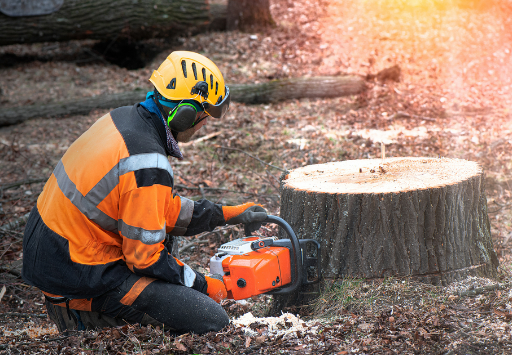How To Safely Remove A Tree Stump From Your Property
Guest post by Hubert Dwight
When it comes to personal landscaping, removing tree stumps is any arborist’s nightmare.
There’s a lot involved in making sure you can execute the job properly and without injury.
But what is the safest way to remove a tree stump from your property using your own tools?
Well, if you’re handy with a chainsaw, the job may be as simple as heading to Jono & Johno for chainsaw spares and then getting started.
For those seeking a little more direction, we’ve gathered some helpful tips that will give you the confidence in planning that you’ll need to rid your garden of that pesky stump.
Reasons you might need to remove a tree stump
Whether it’s a safety hazard or merely an eyesore, there are many reasons to prioritise the removal of a tree stump.
Even so, many homeowners are still hesitant to take on such a big job, namely because it can be labour-intensive. . . but there are a few reasons why you don’t want to leave this job at the bottom of your list.
Firstly, rotten tree stumps can attract and grow fungi spores which may become toxic to other plants in your garden or even attract pests.
Rotten root systems can also corrupt the soil quality making your garden a hostile place for other plants.
It’s also important to maintain a tidy garden to prevent any bushfire hazards.
Professional or DIY
With any DIY project, there’s always the question of when to try yourself and when you should leave it to the professionals.
If you’re planning on removing a tree stump, the answer really depends on your own personal situation.
Removing a tree stump can be simple and straightforward as long as you’re prepared to plan.
Here are a few reasons why you might want to call in a professional
Big job
If your pesky tree stump is wider than a metre, it may require a skilled team of workmen to ensure that it’s safely removed.
Type of tree
Some trees have root systems which are fairly simple, but others may spread further down or even around.
For this reason, it’s important to know what tree species you’re dealing with prior to attempting to remove the stump.
If this is something you’re not sure of, it may be best to call a professional.
Confidence with tools
Operating heavy machinery is not something to be taken lightly and we don’t recommend tree stump removal to be your first project using a chainsaw.
If you don’t have much confidence using a chainsaw, it’s best to enlist the assistance of someone who does.
How to prepare for the removal of your tree stump
One of the most important steps to removing a tree stump is to assess the surroundings.
If the stump is on a hill, or surrounded by other foliage, or if the ground is muddy, all of this could have an impact on how successful your stump removal will be.
It’s important to make sure that you’re aware of any potential slip hazards as you will be handling hazerdous machinery.
Get the gear
Whilst having the proper set of tools is important, any landscaping DIY project should be handled with appropriate personal protective gears. For a stump removal we would recommend having
-
-
- A heavy pair of gardening gloves
- Safety goggles
- Safety footwear
- Hearing protection
-
It’s also important to consider sun protection as uprooting a tree stump is no quick task.
Get the tools
There are a variety of tools that may help with tree stump removal but the basics that we would recommend would be:
-
-
- Chainsaw
- Wheelbarrow
- Shovel and/or Garden trowel
- Shears
- Machete or handsaw
-
Removing the tree stump
Begin to cut
There’s no simpler way to put it, the first thing you’ve got to do is make some initial cuts.
You want to make sure you’re cutting down the trunk into more manageable pieces.
Remember to be slow and precise with your cuts.
Get to the root of it
Once you have cut the trunk down to size, begin to slice through the roots of the stump.
It’s good to have them as exposed as you can so be sure to dig deep around the trunk to get the cleanest cut possible.
Remove the debris and cover
Now that you’ve finished all your slicing and dicing, it is time to remove all of the dead roots and bits of trunk that are leftover.
Remove as much of the tree as possible and then fill the hole with dirt using a shovel or a dingo loader depending on the size of your project.
Enjoy your new garden
With your tree stump finally removed, you can be free to enjoy your garden with peace of mind.
Perhaps you could use the space for a veggie patch or as an entertainment area.
Take pride in knowing you’ve undertaken one of the trickiest garden home improvement tasks.
